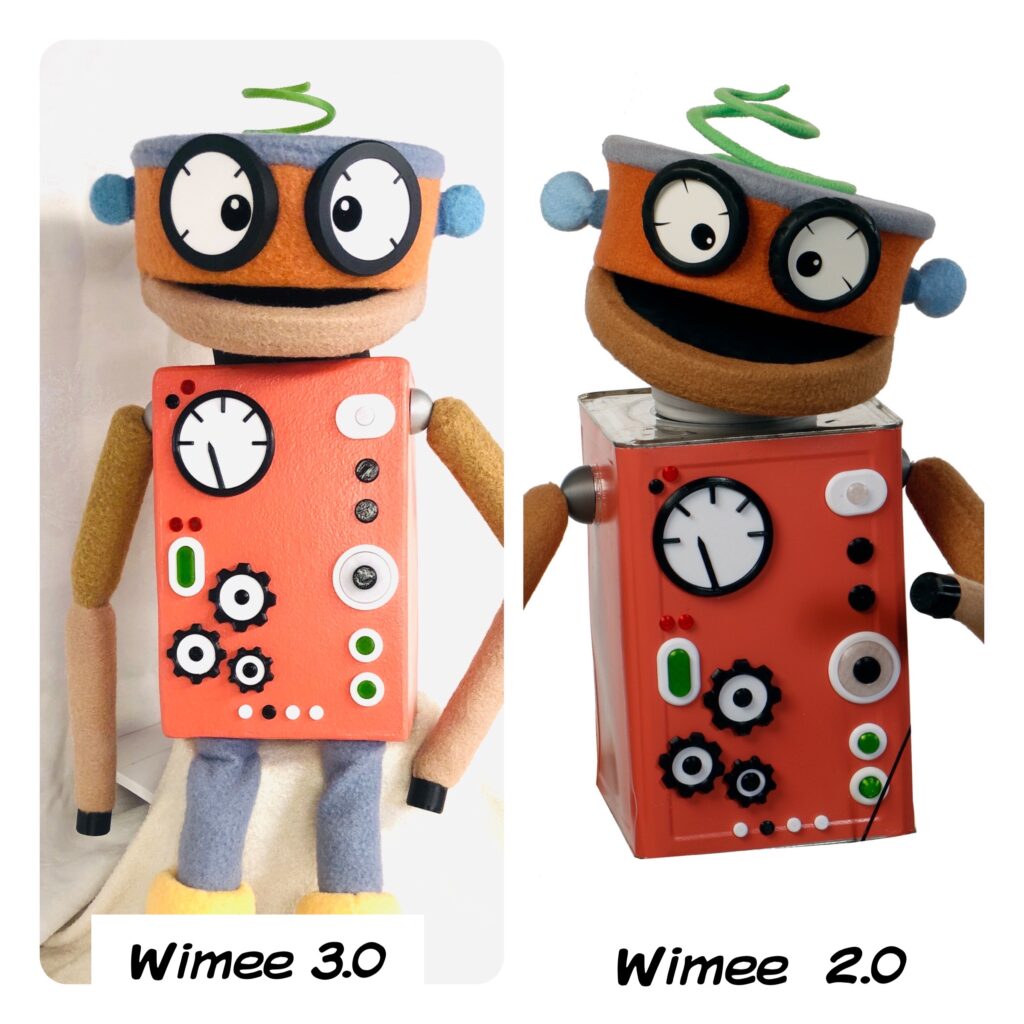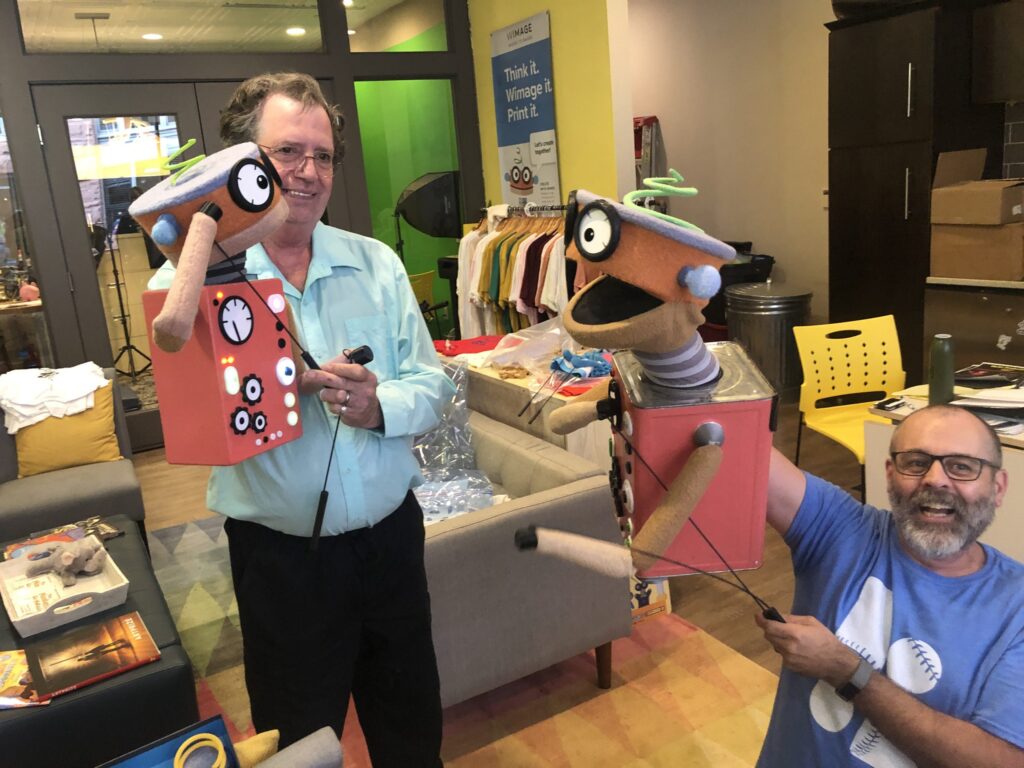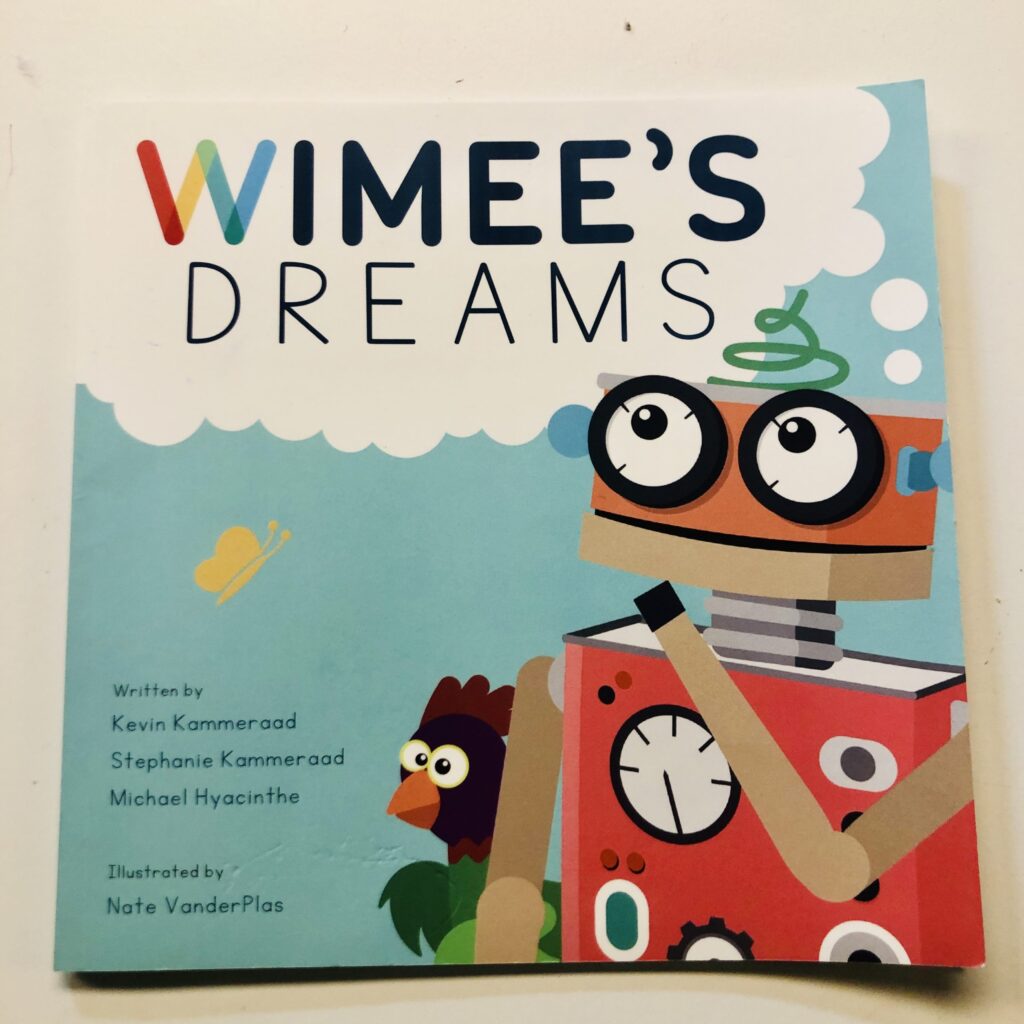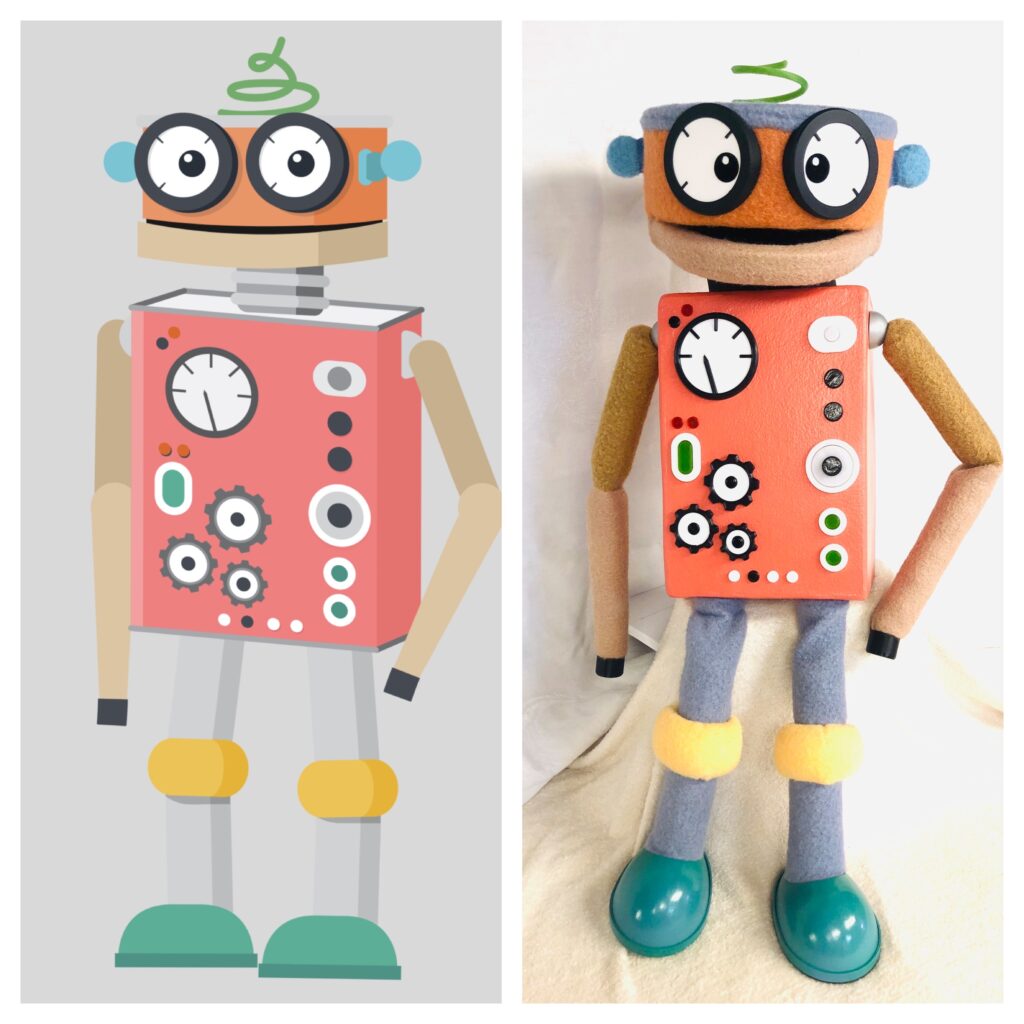Scale Matters: Designing with Scale in Mind
When Small is the Clear Winner
Next month the Jim Henson Exhibition will arrive at my local art museum (Grand Rapids Art Museum, October 2022). I’d heard it said that people are surprised by the size of their favorite characters…..smaller than they imagined. Kermit’s head for example is the size of Jim Henson’s hand. Noel McNeal and Peter Linz of Sesame Street explained why this is useful for television at the Beyond the Sock workshops I attended at UNT. If the character is small and fits the hand well, you can employ subtle movements with great effect on screen. That smaller fit gives the puppeteer greater control.
Wimee the Robot Made Smaller
Some of my favorite local clients, Kevin Kammeraad and Michael Hyacinthe (Wimage, Wimee’s Words), recently ordered a smaller scale version of the robot character Wimee for their PBS show Wimee’s Words. Kevin has puppeteered the Wimee character for many years. It has evolved over time as the illustrations in books and animations have changed. Wimee 2.0 is featured in the latest season of Wimee’s Words on PBS. With the advent of upcoming books, the character needed to match book illustrations and a reduction in scale was requested. Wimee 2.0 was so heavy that a stand was needed to hold the weight of the puppet during filming, and Kevin wanted to be able to move freely with Wimee 3.0 during live performance.
How to Scale Down
To accomplish that, I made the Wimee 3.0 puppet as small as possible. I measured Kevin’s hand from finger tip to back of hand and finger tip to thumb insertion while the hand was held in standard puppeteering form. I also measured from top of hand to elbow in standard stance. I measured his fist balled up to get the smallest puppet neck circumference allowed. With these measurements and the book illustrations, some algebra helped determine the smallest scale we could make the puppet and get the function Kevin wanted with his two distinct styles of performing.
New Wimee and Old Wimee Relative Scale


The math came out that a 75% scale version of Wimee 2.0 would make the ideal size for Wimee 3.0. Now that Wimee 3.0 is built, that 25% change in scale along with lighter materials has transformed the characters ability to be performed. It was fun to watch Kevin explore the variety of movement and freedom to puppeteer in multiple styles now that the puppet is lighter and smaller. I’m excited to see how the next season of Wimee’s Words comes out now that Kevin has more creative freedom. For anyone who has done puppeteering in the Sesame Street style with arm overhead, you know from personal experience how every little ounce of weight adds additional strain to the shoulders.
Take Away Lesson
For those of you who build puppets, my advice is to go as small as possible for on-screen characters. You can always move a puppet character closer to camera to create the illusion of a larger character, even with a human host in shot. The human can always stand farther back to create the desired illusion of comparative scale. This approach allows the puppeteer to perform with more freedom and for a longer period of time before needing rest. If you are building from an existing pattern, you can always alter the scale on a printer. For on-screen performance that scale can go down to the the smallest mouth plate that can be used easily given the size of the puppeteers hand. For larger sizes, which might be more desirable for live performance, a snug hand grip fit to the puppeteer’s hand size will help facilitate movement and reduce fatigue. Always ask yourself and the client what functions are desired. Ask about the “distance to audience” if used in live performance and the “angle to audience” for scale and pupil placement. Consider the puppeteer’s hand size when developing hand grips and neck openings. Learning to customize your builds to serve the client and their puppeteer to take your building skills to the next level and make for happy return customers!


